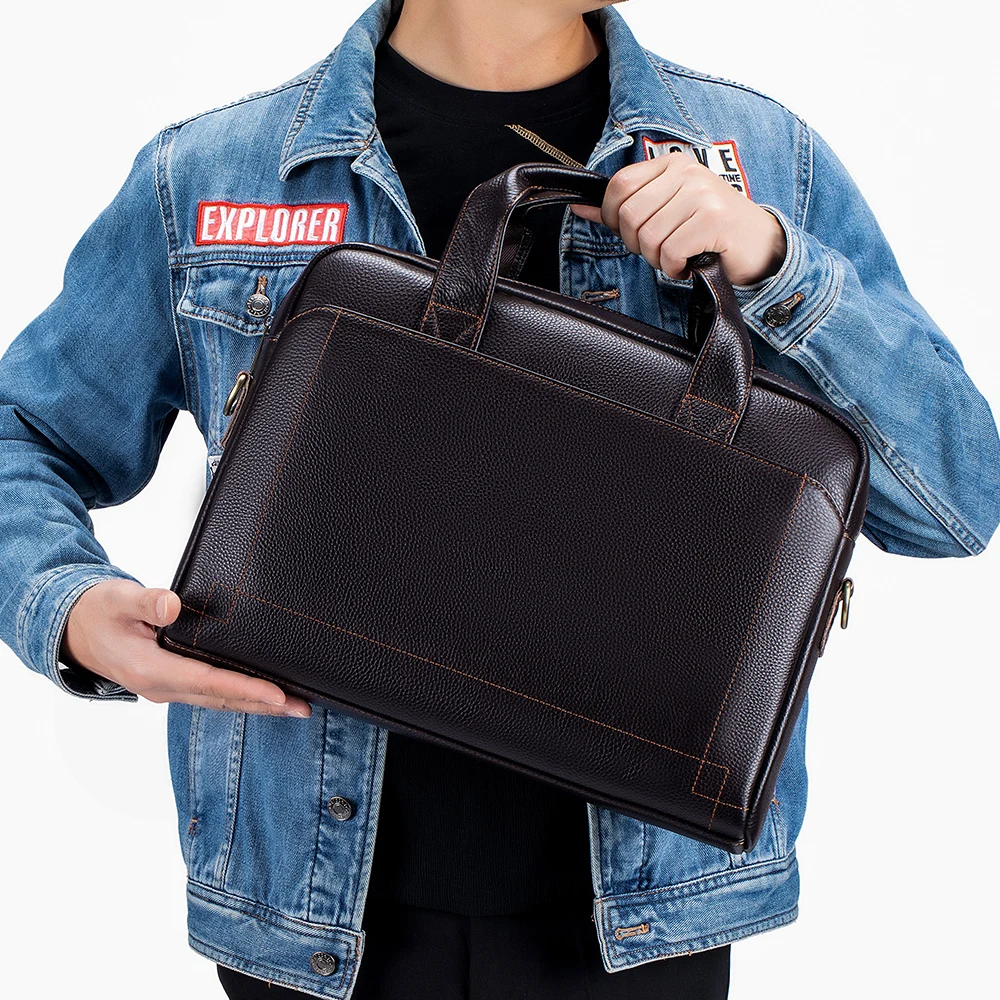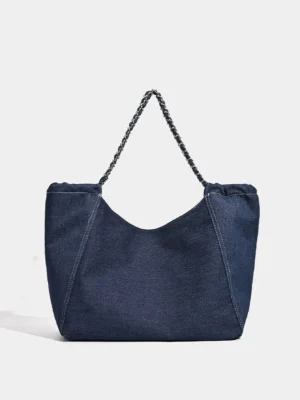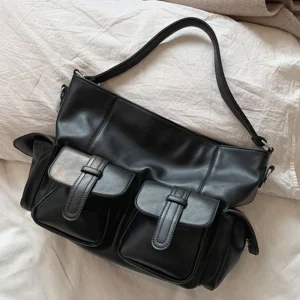Understanding the Importance of Leather Conditioning
Leather conditioning is a vital maintenance process that replenishes essential oils in leather goods, particularly important for frequently used items like totes. As a natural material, leather gradually loses its innate moisture through regular use, exposure to elements, and simply with the passage of time. Without proper care, what once was supple and luxurious can become dry and brittle.
Properly conditioning your leather tote offers numerous benefits that justify the minimal time investment:
- Prevents cracking and extends the lifespan of your investment
- Maintains the natural suppleness and flexibility of the leather
- Restores essential oils that give leather its characteristic luster
- Enhances resistance to minor water exposure and everyday spills
- Prevents permanent damage from environmental factors like sunlight and dry air
The difference between well-maintained and neglected leather is striking. A properly conditioned tote maintains its smooth texture and develops a rich patina over time, while unconditioned leather often becomes rigid, develops a dull appearance, and eventually forms irreparable cracks. Much like how choosing a timeless classic leather briefcase requires attention to quality details, maintaining that quality requires consistent care.
The Optimal Conditioning Schedule for Leather Totes
Quick Answer: Most leather totes benefit from conditioning every 3-6 months under normal use and environmental conditions.
This timeframe serves as a general guideline rather than a rigid rule. The true determining factor should be the condition of the leather itself, not the calendar. A high-quality leather tote that receives proper care between conditionings may need attention less frequently, while one subjected to harsh conditions might require more regular treatment.
“The best conditioning schedule is one based on observation rather than strict timing,” notes leather craftsmen. “Let the leather tell you when it’s thirsty rather than imposing an arbitrary schedule.”
The actual frequency depends on multiple factors that we’ll explore in detail, similar to how maintaining a leather briefcase requires adjustments based on usage patterns. Additional insights on establishing effective leather care routines can help you develop a personalized approach to conditioning your totes.
Key Factors That Determine Conditioning Frequency
Frequency of Use
Daily use totes typically require conditioning every 3-4 months, as regular handling, exposure to body oils, and environmental factors accelerate moisture loss. The friction from daily carrying creates micro-abrasions that gradually wear away protective finishes.
Occasional use totes may only need conditioning every 6-12 months. When stored properly between uses, leather retains its natural oils longer and experiences less physical stress.
Environmental Conditions
Dry climates extract moisture from leather more rapidly, sometimes necessitating conditioning every 2-3 months. In regions like Arizona or Nevada, leather can dry out significantly faster than in moderate climates.
Humid environments present different challenges. While they may not dry out leather as quickly, they create ideal conditions for mold growth, requiring specialized care focused on preventing moisture retention rather than adding it.
Temperature extremes accelerate drying. Winter heating systems and summer air conditioning both reduce humidity, drawing moisture from leather. Direct sunlight exposure breaks down leather fibers and evaporates natural oils, requiring more frequent conditioning for totes regularly left in cars or near windows.
Leather Type and Quality
Different leather varieties have unique conditioning requirements. Full-grain leather typically holds conditioner better but may need deeper treatment, while the benefits of full-grain leather bags include developing a rich patina that improves with proper conditioning.
Treated leather often features factory-applied finishes that initially repel moisture but eventually wear away. New totes may come pre-conditioned from the manufacturer, allowing you to extend the time until first treatment.
Clear Signs Your Leather Tote Needs Conditioning Now
Recognizing when your leather requires conditioning is crucial for maintaining its integrity. Look for these indicators:
Visual indicators:
– Dull, lackluster appearance instead of a healthy sheen
– Lighter color appearing in high-friction areas (handles, corners)
– Fine lines or small surface cracks beginning to form
– More prominent scuffs and scratches that don’t buff out easily
– Uneven color or noticeably faded areas, particularly around the edges
Physical indicators:
– Leather feels dry or rough when touched
– Loss of suppleness and flexibility when gently bending edges
– Stiffness in previously flexible areas such as straps
– Surface feels brittle or papery rather than smooth and resilient
A simple test to determine if conditioning is needed is the water drop test: place a tiny droplet of water on an inconspicuous area. If it sits on the surface without being slightly absorbed, the leather likely needs conditioning. However, if the water soaks in immediately and darkens the leather significantly, the material is very dry and requires prompt attention.
Proper storage practices between uses can help maintain your tote’s condition longer and reduce how frequently you need to condition it.
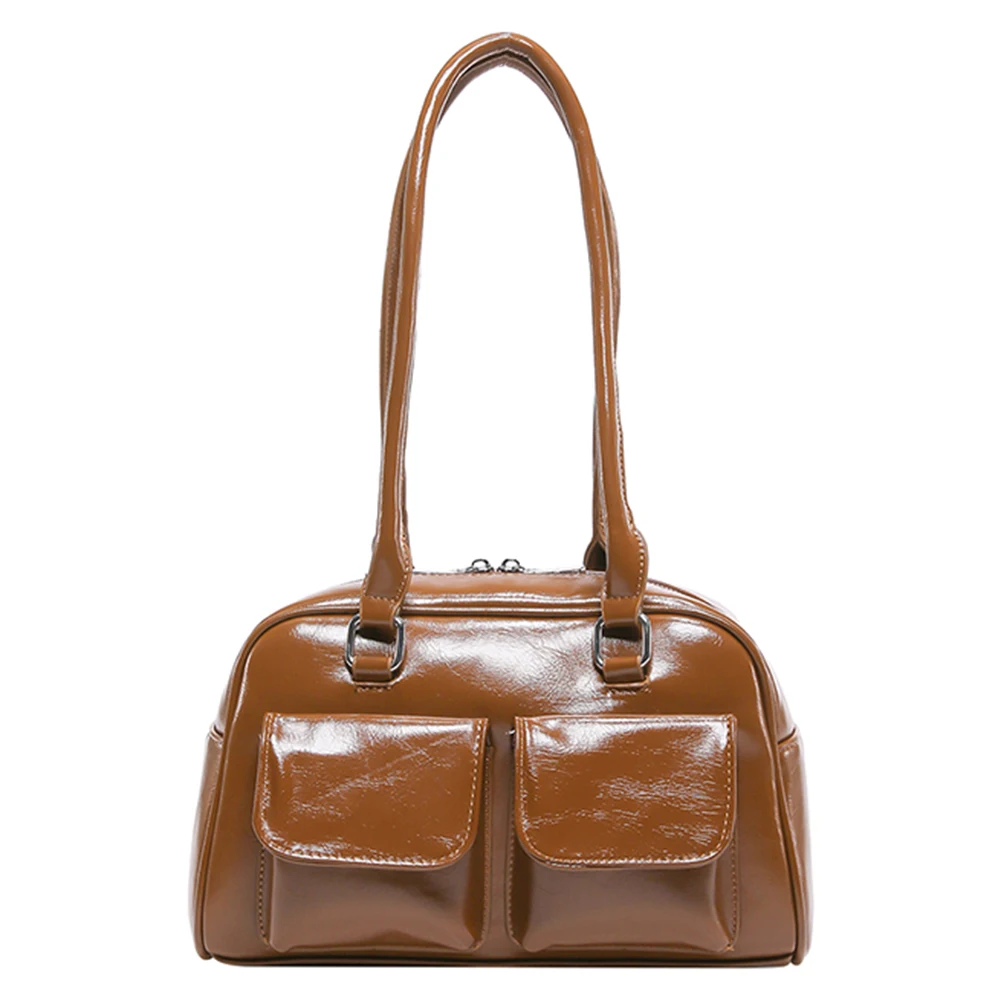
The Risks: Consequences of Improper Conditioning Practices
Understanding what happens when conditioning is neglected—or overdone—helps emphasize why proper maintenance matters.
Under-conditioning Risks
Insufficient conditioning leads to leather drying out, which causes irreversible cracking and structural damage, particularly along stress points like handles and seams. The leather permanently loses its flexibility and strength, becoming brittle and prone to tearing.
Under-conditioned leather also becomes more vulnerable to stains and moisture damage as it lacks the protective oils that help repel minor spills. Perhaps most significantly, neglect significantly shortens the lifespan of premium leather work totes, turning what should be a long-term investment into a short-term purchase.
Over-conditioning Risks
Excessive conditioning creates different but equally problematic issues. The leather can become greasy or sticky, attracting dirt and creating an unpleasant tactile experience. Over-application clogs leather pores, preventing it from “breathing” naturally.
Too much conditioner can transfer to clothing or items stored inside the tote, creating oily stains. Light-colored leathers may darken excessively and permanently when over-conditioned. Most concerning is that oversaturation can actually weaken leather fibers over time, causing stretching and structural issues.
Step-by-Step Guide to Properly Condition Your Leather Tote
Preparation
- Empty your tote completely and check interior pockets for forgotten items
- Clean the surface thoroughly using a leather-appropriate cleaner or mild soap and water
- Remove surface dirt, dust, and residue with a soft cloth
- Allow the tote to fully dry if you’ve used any moisture during cleaning
Selecting the Right Conditioner
Choose a conditioner formulated for your specific leather type. Natural-based conditioners containing beeswax, lanolin, or neatsfoot oil work well for most full-grain leathers. Synthetic conditioners may be better suited for treated or coated leathers.
Always test your chosen product on an inconspicuous area first, such as an interior corner or the bottom of the bag. Wait 24 hours to ensure there’s no unwanted darkening or adverse reaction.
Application Technique
Apply sparingly—less is more when it comes to leather conditioning. Use a clean, soft cloth (microfiber works well) to apply the conditioner in gentle circular motions. Pay special attention to high-stress areas like handles, corners, and the bottom of the tote.
Work section by section rather than coating the entire surface at once. This allows you to control the amount of product used and ensure even coverage.
Absorption Time
Allow the conditioner to penetrate the leather for the time recommended on the product label (typically 15-30 minutes). Signs of proper absorption include the conditioner disappearing into the leather rather than sitting on the surface. The leather should feel moisturized but not wet or greasy.
Finishing Touches
Wipe away any excess product with a clean, dry cloth. Buff the surface gently to achieve your desired finish and sheen. Allow the tote to rest for 24 hours before using it again, giving the conditioner time to fully integrate with the leather.
Premium women’s leather work totes often have special design elements that require extra attention during conditioning. When working with high-quality leather goods like a leather briefcase, these conditioning principles ensure optimal results.
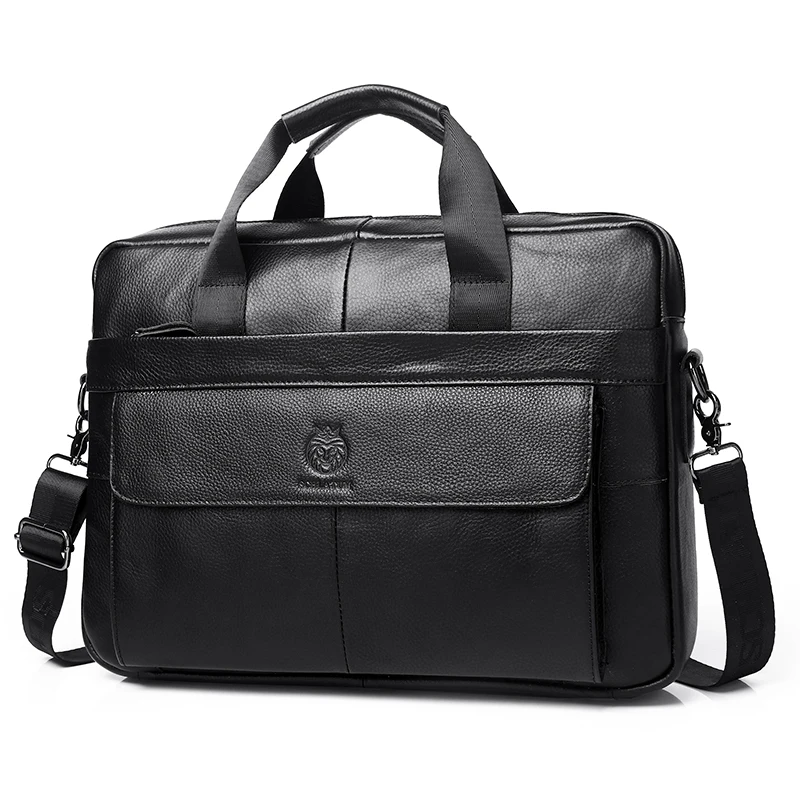
Seasonal Conditioning Schedule: Adapting to Climate Changes
Adjusting your conditioning routine seasonally helps address changing environmental conditions:
| Season | Recommended Care | Frequency Adjustment |
|---|---|---|
| Spring | Apply light conditioning after winter storage | Standard schedule (3-6 months) |
| Summer | Use UV-protective conditioners; condition before extended sun exposure | Increase frequency by 2-4 weeks if regularly exposed to sun |
| Fall | Apply thorough conditioning to repair summer damage | Standard schedule with focus on replenishment |
| Winter | Use heavier conditioning to protect against dry indoor heating | Increase frequency by 2-4 weeks in very cold, dry regions |
Geographic adjustments are essential: coastal regions with salt air exposure may require more frequent conditioning with specialized products, while high-humidity tropical areas benefit from lighter, more frequent applications.
Beautiful brown leather work totes particularly show seasonal wear, as their rich color can be affected by sun exposure and environmental factors.
Conditioning New vs. Vintage Leather Totes: Different Approaches
New Totes
Most new leather totes come pre-treated from the manufacturer and generally don’t need immediate conditioning. Allow 2-4 weeks of regular use before applying the first conditioner to let the leather begin its natural breaking-in process.
Pay attention to how the leather responds during this initial period. Areas that show accelerated wear, such as handles or corners, may benefit from spot conditioning before the rest of the tote needs attention.
Vintage or Aged Totes
Vintage leather often requires a restoration approach rather than simple maintenance. For severely dried leather, consider a multi-stage conditioning process: start with a gentle cleaner, follow with a deeply penetrating conditioner, then apply a standard conditioner after the leather has had time to absorb the initial treatment.
Heirloom or antique leather items may benefit from professional restoration for their first treatment, followed by regular at-home maintenance.
Brown Leather Work Tote, Large Leather Work Tote
$194.38 Select options This product has multiple variants. The options may be chosen on the product pageLeather Laptop Work Tote, Tan Leather Work Tote, Women's Leather Work Tote, Zippered Leather Work Tote
Price range: $223.62 through $237.97 Select options This product has multiple variants. The options may be chosen on the product pageCanvas & Leather Messenger Bag, Leather Commuter Tote
$80.41 Select options This product has multiple variants. The options may be chosen on the product pageBlack Leather Messenger Bag, Black Leather Work Tote, Faux Leather Work Tote
$101.88 Select options This product has multiple variants. The options may be chosen on the product pageBlack Leather Work Tote, Faux Leather Work Tote, Women's Leather Business Tote
Price range: $88.81 through $93.85 Select options This product has multiple variants. The options may be chosen on the product pageLeather Laptop Work Tote, Women's Leather Business Tote, Women's Leather Work Tote
$281.42 Select options This product has multiple variants. The options may be chosen on the product page
Common Leather Conditioning Mistakes to Avoid
• Using household oils: Olive oil, coconut oil, and other food-based products may seem like natural alternatives, but they can turn rancid over time, causing odor and degradation of leather fibers. They also lack the preservatives needed for long-term leather protection.
• Applying conditioner to wet leather: Conditioning should only be done on completely dry leather. Moisture trapped beneath conditioner can lead to mildew growth and improper absorption.
• Skipping the patch test: Always test conditioner on an inconspicuous area first. Some products can significantly darken leather or affect its finish, especially on lighter-colored totes.
• Over-application: Using too much product doesn’t improve results—it creates a greasy surface that attracts dirt. A thin, even layer is always more effective than a heavy application.
• Conditioning unnecessarily: Treating leather that doesn’t need it wastes product and can oversaturate the material. Look for the signs of dryness before conditioning, especially with zippered leather work totes that have multiple materials.
Properly cleaning stains from leather bags before conditioning ensures optimal product absorption and prevents trapping dirt beneath the conditioner.
FAQs About Conditioning Leather Totes
Can I use the same conditioner on all leather products?
While some conditioners are versatile, different leather types have different needs. Full-grain leather generally benefits from natural-based conditioners, while finished or coated leathers may require specialized products. Always check manufacturer recommendations first.
Will conditioning fix scratches and scuffs?
Minor scratches and scuffs can often be minimized through conditioning as it helps rehydrate and plump the leather fibers. However, deep scratches may require leather repair products specifically designed for that purpose.
How do I condition leather totes with hardware or non-leather elements?
Apply conditioner carefully around hardware, avoiding metal elements that could be tarnished by oils. For mixed-material totes, use cotton swabs or precision applicators to target leather areas without affecting fabric, suede, or synthetic portions.
Can I condition the inside of my leather tote?
Generally, conditioning leather tote interiors isn’t necessary unless they’re unlined raw leather. Most interiors are either finished differently or lined with fabric. If your tote has an unlined leather interior that appears dry, use a very light application of conditioner.
How do I know if I’ve applied too much conditioner?
If the leather feels greasy or sticky after the recommended absorption time, you’ve likely over-applied. Remove excess by buffing firmly with a dry microfiber cloth.
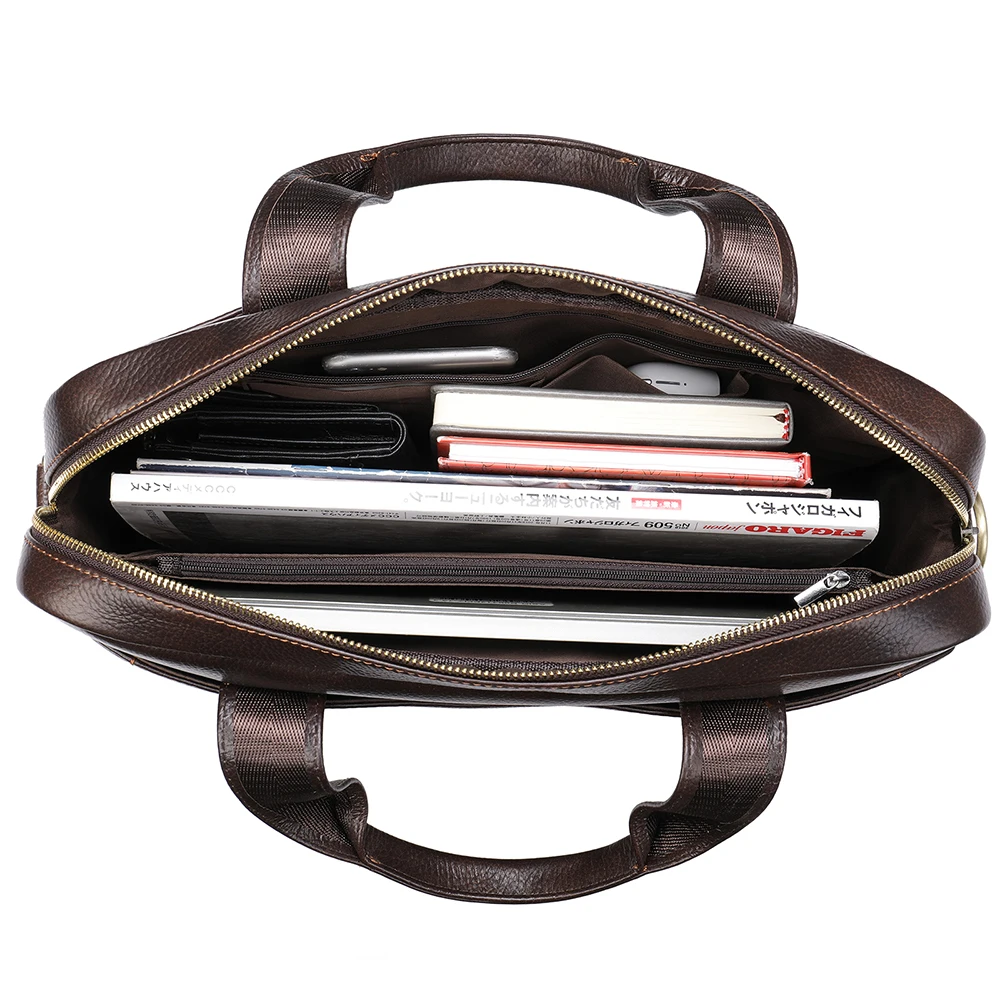
Leather laptop work totes often require special attention to ensure conditioning products don’t affect electronic storage compartments.
Beyond Conditioning: Complete Leather Tote Care Routine
Conditioning is just one aspect of comprehensive leather care. Develop these daily habits to maintain your tote’s appearance:
• Wipe down your leather tote with a soft cloth after each use to remove dust and surface dirt
• Store your tote properly when not in use—stuffed with paper to maintain shape and in a dust bag or pillowcase
• Keep leather away from direct heat sources, which accelerate drying
• Apply preventative protectants appropriate for your leather type before seasonal changes
Consider professional cleaning and conditioning annually for valuable totes, especially those with complex designs or exotic leathers. Complementary products like leather protectants can provide additional water and stain resistance between conditioning treatments.
Understanding how to protect leather bags from rain complements your conditioning routine by preventing water damage that would necessitate more frequent care.
Why Quality Matters: Choosing the Right Conditioner for Premium Leather Totes
The conditioner you select significantly impacts your tote’s longevity and appearance. Natural conditioners containing beeswax, lanolin, or neatsfoot oil provide excellent nourishment for most untreated leathers. Synthetic conditioners often work better for finished or treated leathers where penetration is less critical.
Avoid products containing alcohol, petroleum derivatives, or silicone, as these can dry out or damage leather over time. While premium conditioners may cost more initially, they typically require less product per application and provide superior protection, making them more economical long-term.
When caring for black leather work totes, be particularly careful about conditioner selection, as some products can affect the depth and consistency of dark dyes.
Key Takeaways: Mastering the Art of Leather Tote Conditioning
Proper leather conditioning is an essential part of owning and maintaining a quality leather tote. To summarize the key points:
• Condition most leather totes every 3-6 months, adjusting based on use frequency and environmental conditions
• Trust your observations over calendar reminders—look for visual and tactile indicators of dryness
• Apply conditioner sparingly using gentle circular motions, allowing proper absorption time
• Different leather types and finishes require different conditioning approaches
• Balance is crucial—both under-conditioning and over-conditioning can damage your tote
By developing a personalized care routine based on your specific leather tote and usage patterns, you’ll ensure your investment remains beautiful and functional for years to come. Remember that quality leather goods like those from Poise Porter are designed to last for decades when properly maintained.

